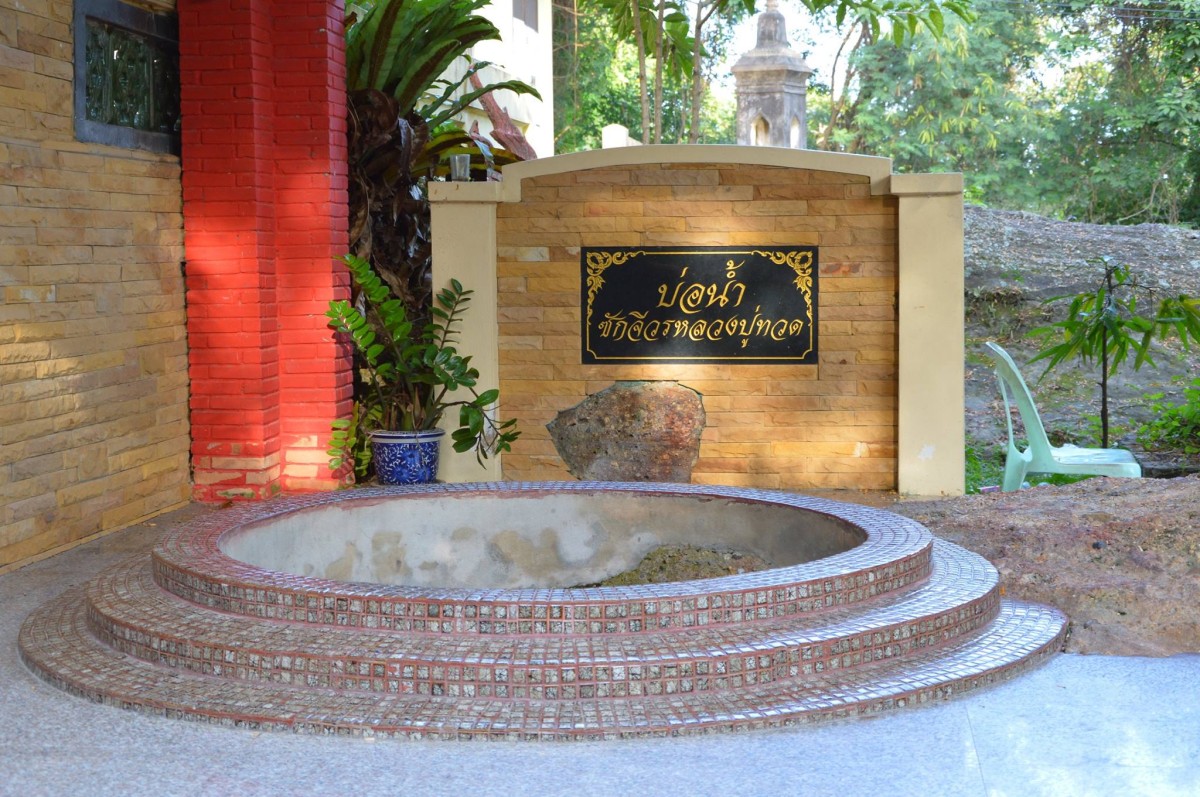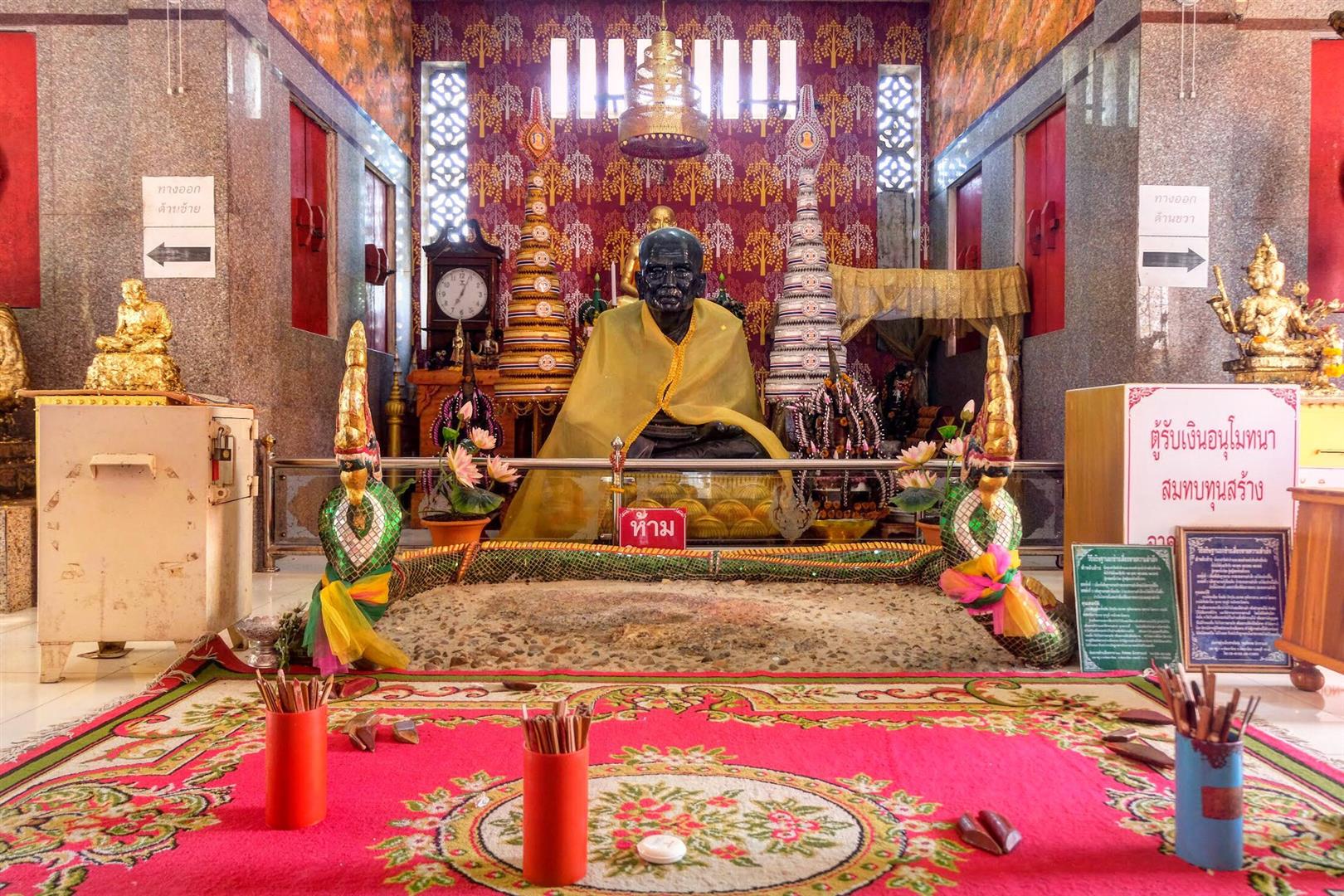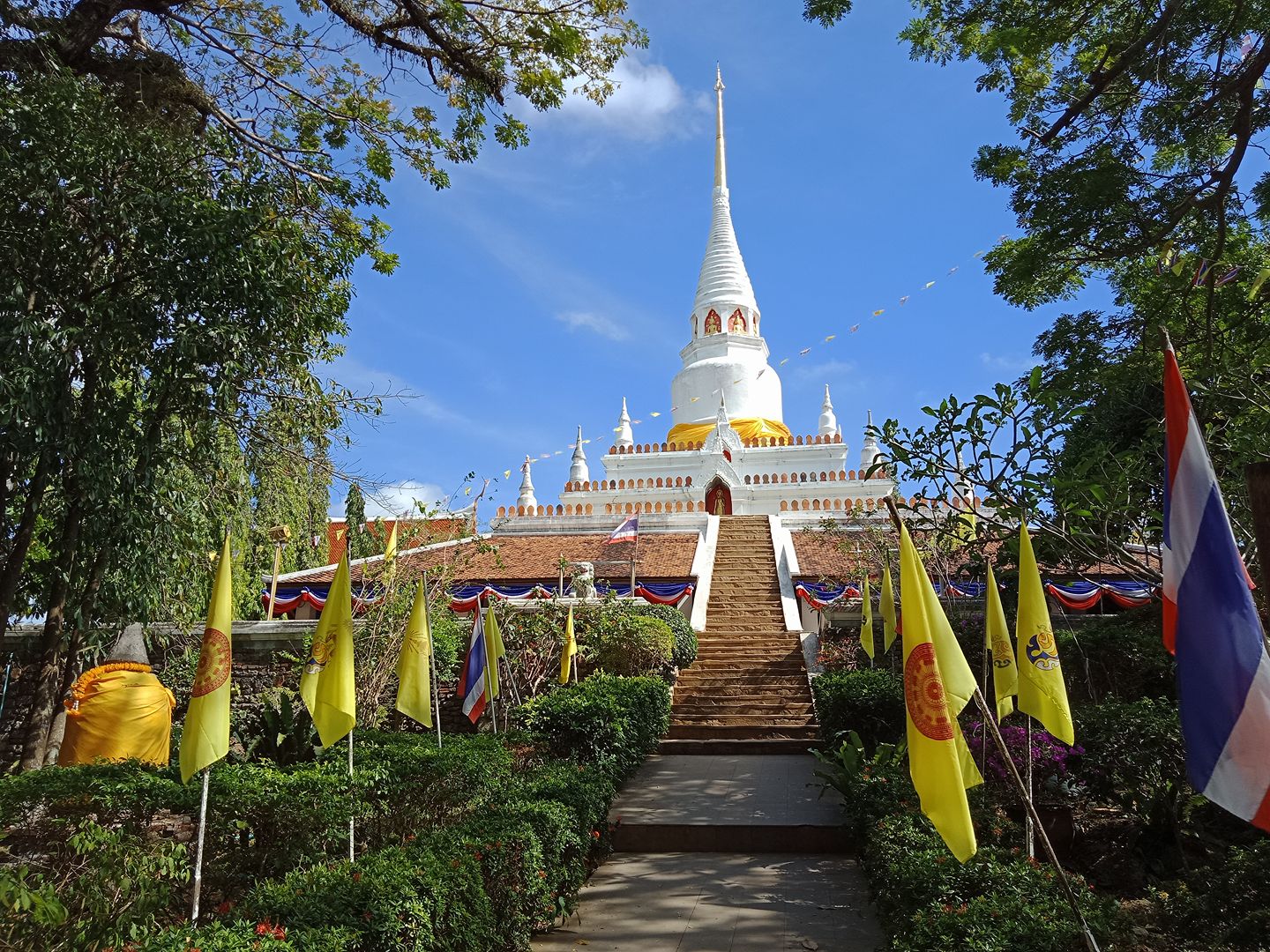
One of the tourist routes in Songkhla Lake is to follow the footsteps of “Luang Pu Thuat”, Pha Ko Temple. Anyone passing through the Sating Phra District in Songkhla Province and failing to stop at Pha Ko Temple or Wat Ratchapraditthan to pay respects to “Luang Pu Thuat stepped on fresh sea water” is seriously losing out.
The cultural heritage that has been transformed into a tourist route that is close to the way of life of the community is the historical tourism route that follows in the footsteps of Luang Pu Thuat in the Sating Phra District. This route was inspired by the power of faith that was passed down from generation to generation.
Let’s start the tourist route at the assembly point or tourist service point at the Somdej Chao Phako Museum, located at the foot of Phako Temple Mountain. There are trams available for tourists who are interested in group travel. Colorful trams that can accommodate up to 30 passengers per trip.
The first place to be introduced is Khuha Cave, which is the only excavated cave found in Thailand. It is a place of worship for Brahmin-Hinduism that exhibits evidence of historic places and artifacts that demonstrate the adoption of religious culture from India, including Mahayana Buddhism and Brahman-Hinduism, dating back to the 12th and 13th centuries of the Buddhist era.
Near Khuha Cave, there is the Tha Pang Pra, a large ancient pond, a sacred site that has been with Pha Ko Temple and Phra Malik Chedi since ancient times.
There are also many other tourist attractions such as Ton Liap Temple. There are still other important points that must not be missed, including paying homage to the body of Father Than Jamnien Chotithammo, former abbot of Ton Liab Monastery, and San Ta Hu-Yai Chan, the parents of Luang Pu Thuat, who have come to build and dedicate it.

Napel Monastery is not far from Wat Ton Liap. One eye-catching thing is a sculpture of a large snake spitting a crystal ball to a child lying in a cradle, which is part of the story of Luang Pu Thuat. When Luang Pu Thuat was still a boy, the crab was tied to a hammock at the end of the rice field. During that time, a miracle happened when a giant snake or king cobra came to spit a crystal ball and left it on the cradle. Later, that crystal ball became a sacred object of Luang Pu Thuat.
Dee Luang Temple, Tambon Dee Luang, is a place related to the history of Luang Pu Tuat. It is the place where the boy Poo came to learn writing and reading with Than Sompharn Chuang, the abbot of Wat Dee Luang, who had the honor of being an uncle. There are many interesting antiques to visit, such as the Stupa Sompharn Chuang, which is the work of local craftsmen.

Finally, let’s end with an important place of tourism following in the footsteps of Luang Pu Thuat, namely Wat Pha Ko, Chumphon Sub-district, which is the temple where Luang Pu Thuat was the abbot and maintained until he was prosperous before he disappeared when he was 80 years old.
For the merit-making tourists, they must go to worship the shrine to be considered complete. Don’t forget to stop by to pay respects to “Phra Malik Chedi” located on the top of Kuan (peak), the highest in this area. From above, you can see the scenery of the Sathing Phra Peninsula, where the Gulf of Thailand to the east and Songkhla Lake to the west.
Source: Tourism Authority of Thailand (TAT)
Tel: +66 0 2250 5500